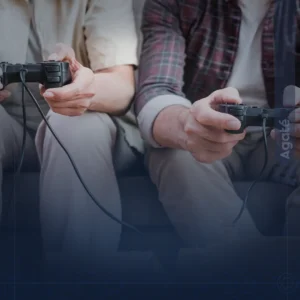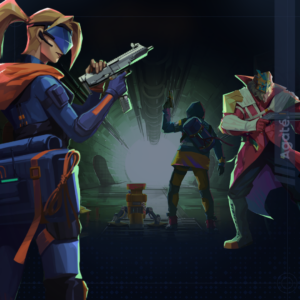The field of technical art is a fascinating and rapidly evolving discipline that has gained immense importance in the entertainment industry in recent years. Technical art involves the combination of technical skills and artistic knowledge to create and implement visual and artistic elements in various forms of media, including films, animations, and video games. As technology continues to advance, technical art is likely to become even more important in the development of the entertainment industry.
Technical Art in the Game Industry
Technical art plays a vital role in game development by bridging the gap between game design’s artistic and technical aspects. It encompasses several areas, including animation, rendering, lighting, and shading. Technical art is a critical component of the game development process, as it ensures the optimization of game assets and seamless functioning across various platforms.
In recent years, the popularity of video games has skyrocketed, making technical art an essential field that offers exciting opportunities for individuals with a passion for both art and technology. Moreover, technical art is not only about enhancing game visuals but also about ensuring that the game runs efficiently without any issues. This requires technical artists to work closely with other game development professionals, such as programmers and artists, to ensure that the game meets the technical specifications while meeting the artistic vision. If you are interested in learning about the responsibilities of a technical artist, look no further!
Technical artists in the gaming industry are responsible for creating and implementing the tools, pipelines, and processes that allow game artists to create their visions efficiently and effectively. They work closely with game designers, programmers, and artists to ensure that the game looks and performs as intended while also maintaining artistic consistency. For example, a technical artist might create custom shaders that give specific objects in the game unique textures or lighting effects. They might also optimize game assets to ensure that the game runs smoothly on a variety of hardware configurations or develop tools that allow artists to easily and efficiently create and import assets into the game engine. Technical artists must be able to communicate effectively with both artists and programmers, understand the technical requirements of the game engine, and be skilled in coding and scripting languages to bring their ideas to life.
Technical artists in different companies in the gaming industry differ in terms of responsibilities and activities. Here are some activities a technical artist does:
Rigging
Game rigging is one of the most significant aspects of game creation that aims to breathe life into 3D models. Rigging can be defined as the process of putting a skeleton inside 3D models. This skeleton or rig allows animators to deform the mesh of the 3D model to create various poses and movements. Rigging involves several steps, including creating joints, binding the mesh to the joints, setting up controls, and creating constraints to restrict the movement of certain parts of the model, resulting in a seamless movement for the 3D models.
Once completed, the process can be used to create a variety of animations, such as walking, jumping, and other complex movements. Game rigging is an essential part of the game development process as it enables developers to create dynamic and visually appealing animations that bring game characters and environments to life. It takes a combination of technical skills and artistic sense to create a functional and visually pleasing rig. Game riggers often work closely with animators to ensure the rig meets their needs and requirements.
Shader Writing
In game development, shader writing is an essential part of the pipeline. It involves the creation of custom code that determines how a 3D object is rendered on screen. Shaders control various aspects of the object’s appearance, including color, texture, and lighting. Technical artists use shaders to create realistic lighting, shadows, and other visual effects that make games look more lifelike.
Writing shaders requires a strong understanding of programming and mathematics. While it can be challenging, the results of well-written shaders can be impressive. Shaders are used to create all kinds of effects, from the reflection of light on water to the glow of a character’s eyes. The technical artists need to work closely with the game designers and programmers to ensure that the shaders meet the game’s artistic and technical requirements. Despite the process’s complexity, shader writing makes games look so visually stunning and immersive.
Maintaining Art Pipelines
Technical artists are responsible for developing and maintaining game development’s art tools and pipelines. This involves working closely with programmers to design and implement tools that allow artists to create and import assets into the game engine. These tools can range from simple scripts that automate repetitive tasks to complex software packages that enable artists to create complex animations and special effects.
One of the key aspects of tool development is ensuring that the tools are easy to use and integrate seamlessly with the game engine. This requires technical artists to have a deep understanding of the game engine’s architecture and programming language. They must also have strong communication skills to work with both the art and programming teams to ensure that the tools meet their needs.
Maintaining art pipelines is also a critical aspect of the technical artist’s role. This involves ensuring that assets are created and imported correctly into the game engine and that they meet the required technical specifications. Technical artists are also responsible for troubleshooting and resolving issues that arise during the art pipeline, such as file format compatibility or performance issues.
Conclusion
In conclusion, technical art is a highly specialized field that combines artistic talent and technical knowledge to create stunning visual elements in various forms of media, including video games. Though it might vary greatly depending on the company, technical artists play a crucial role in the game development process, ensuring that the game meets its technical specifications while also maintaining artistic integrity.
As the popularity of video games continues to soar, technical art is becoming an increasingly vital field that offers exciting opportunities for those passionate about art and technology. Whether you are interested in pursuing a career in technical art or want to learn more about the process of creating video games, understanding the role of technical artists in game development can provide valuable insights into this fascinating field.







